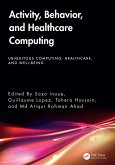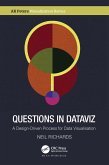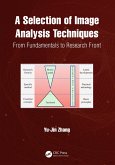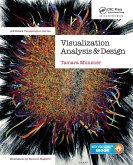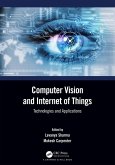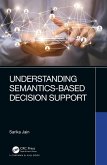Activity, Behavior, and Healthcare Computing (eBook, ePUB)
Redaktion: Inoue, Sozo; Ahad, Md Atiqur Rahman; Hossain, Tahera; Lopez, Guillaume


Alle Infos zum eBook verschenken

Activity, Behavior, and Healthcare Computing (eBook, ePUB)
Redaktion: Inoue, Sozo; Ahad, Md Atiqur Rahman; Hossain, Tahera; Lopez, Guillaume
- Format: ePub
- Merkliste
- Auf die Merkliste
- Bewerten Bewerten
- Teilen
- Produkt teilen
- Produkterinnerung
- Produkterinnerung

Hier können Sie sich einloggen

Bitte loggen Sie sich zunächst in Ihr Kundenkonto ein oder registrieren Sie sich bei bücher.de, um das eBook-Abo tolino select nutzen zu können.
Activity, Behavior, and Healthcare Computing relates to the fields of vision and sensor-based human action or activity and behavior analysis and recognition. As well as a series of methodologies, the book includes original methods, exploration of new applications, excellent survey papers, presentations on relevant datasets, challenging applications, ideas and future scopes with guidelines. Featuring contributions from top experts and top research groups globally related to this domain, the book covers action recognition, action understanding, gait analysis, gesture recognition, behavior…mehr
- Geräte: eReader
- mit Kopierschutz
- eBook Hilfe
- Größe: 19.91MB
![Activity, Behavior, and Healthcare Computing (eBook, PDF) Activity, Behavior, and Healthcare Computing (eBook, PDF)]() Activity, Behavior, and Healthcare Computing (eBook, PDF)175,95 €
Activity, Behavior, and Healthcare Computing (eBook, PDF)175,95 €![AI for Sports (eBook, ePUB) AI for Sports (eBook, ePUB)]() Chris BradyAI for Sports (eBook, ePUB)23,95 €
Chris BradyAI for Sports (eBook, ePUB)23,95 €![Questions in Dataviz (eBook, ePUB) Questions in Dataviz (eBook, ePUB)]() Neil RichardsQuestions in Dataviz (eBook, ePUB)35,95 €
Neil RichardsQuestions in Dataviz (eBook, ePUB)35,95 €![A Selection of Image Analysis Techniques (eBook, ePUB) A Selection of Image Analysis Techniques (eBook, ePUB)]() Yu-Jin ZhangA Selection of Image Analysis Techniques (eBook, ePUB)43,95 €
Yu-Jin ZhangA Selection of Image Analysis Techniques (eBook, ePUB)43,95 €![Visualization Analysis and Design (eBook, ePUB) Visualization Analysis and Design (eBook, ePUB)]() Tamara MunznerVisualization Analysis and Design (eBook, ePUB)68,95 €
Tamara MunznerVisualization Analysis and Design (eBook, ePUB)68,95 €![Computer Vision and Internet of Things (eBook, ePUB) Computer Vision and Internet of Things (eBook, ePUB)]() Computer Vision and Internet of Things (eBook, ePUB)54,95 €
Computer Vision and Internet of Things (eBook, ePUB)54,95 €![Understanding Semantics-Based Decision Support (eBook, ePUB) Understanding Semantics-Based Decision Support (eBook, ePUB)]() Sarika JainUnderstanding Semantics-Based Decision Support (eBook, ePUB)41,95 €
Sarika JainUnderstanding Semantics-Based Decision Support (eBook, ePUB)41,95 €-
-
-
Dieser Download kann aus rechtlichen Gründen nur mit Rechnungsadresse in A, B, BG, CY, CZ, D, DK, EW, E, FIN, F, GR, HR, H, IRL, I, LT, L, LR, M, NL, PL, P, R, S, SLO, SK ausgeliefert werden.
- Produktdetails
- Verlag: Taylor & Francis eBooks
- Seitenzahl: 366
- Erscheinungstermin: 26. Februar 2025
- Englisch
- ISBN-13: 9781040298312
- Artikelnr.: 73154485
- Verlag: Taylor & Francis eBooks
- Seitenzahl: 366
- Erscheinungstermin: 26. Februar 2025
- Englisch
- ISBN-13: 9781040298312
- Artikelnr.: 73154485
- Herstellerkennzeichnung Die Herstellerinformationen sind derzeit nicht verfügbar.
Preface
Acknowledgments
About the Editors
Part 1: Activity and Behavior
Chapter 1: PressureTransferNet: Human Attribute Guided Dynamic Ground
Pressure Profile Transfer using 3D Simulated Pressure Maps
Chapter 2: SIMUAug: Variability-aware Data Augmentation for Wearable IMU
using Physics Simulation
Chapter 3: Estimation of Muscle Activation during Complex Movement using
Unsupervised Motion Primitives Decomposition of Limb Kinematics
Chapter 4: Pitcher Identification Method using an Accelerometer and
Gyroscope Embedded in a Baseball
Chapter 5: Design and Implementation of a Long-Casting Support System for
Lure Fishing using an Accelerometer
Chapter 6: Contrastive Left-Right Wearable Sensors (IMUs) Consistency
Matching for HAR
Chapter 7: Estimation Method of Doneness for Boiled Eggs and Diced Steaks
using Active Acoustic Sensing
Part 2: Healthcare
Chapter 8: Older Adults Daily Mobility and Its Connection to DEMMI
Chapter 9: Subjective Stress and Heart Rate Variability Patterns: A Study
on Harassment Detection
Chapter 10: Analysis of Physiological Variances in Thermal Comfort among
Individuals
Chapter 11: Personal Thermal Assessment using Feature Reduction and Machine
Learning Techniques
Chapter 12: Analysis of Personal Thermal State using Machine Learning
Algorithms to Prevent Heatstroke
Chapter 13: Ensemble Learning Models-Based Prediction of Personal Thermal
Assessment Aimed at Heatstroke Prevention
Chapter 14: Predicting Heatstroke Risk and Preventing Health Complications:
An Innovative Approach Using Machine Learning and Physiological Data
Chapter 15: Predictive Modeling for Heatstroke Risk Forecasting Integrating
Physiological Features Using Ensemble Classifier
Chapter 16: Clustering-Based Feature Selection and Stacked Generalization
Method to Offset Imbalanced Data for Thermal Stress Assessment
Chapter 17: Enhancing Personalized Heatstroke Prevention: Forecasting
Thermal Comfort Sensations through Data-Driven Models
Chapter 18: Advancing Heatstroke Prevention: Integrating Physiological Data
for Enhanced Thermal Comfort Forecasting
Chapter 19: Intrapatient Forecasting of Parkinson's Wearing-Off by
Analyzing Data from Wrist-Worn Fitness Tracker and Smartphone
Chapter 20: Foreseeing Wearing-Off State in Parkinson's Disease Patients: A
Multimodal Approach with the Usage of Machine Learning and Wearables
Chapter 21: Wearable Technology-Enabled Prediction of Wearing-Off
Phenomenon in Parkinson's Disease: A Personalized Approach Using LSTM-Based
Time-Series Analysis
Chapter 22: Forecasting Parkinson's Patient's Wearing-Off Periods by
Employing Stacked Super Learner
Chapter 23: Forecasting Wearing-Off in Parkinson's Disease: An Ensemble
Learning Approach Using Wearable Data
Chapter 24: Forecasting the Wearing-Off Phenomenon in Parkinson's Disease:
Summarized Approaches and Insights
Preface
Acknowledgments
About the Editors
Part 1: Activity and Behavior
Chapter 1: PressureTransferNet: Human Attribute Guided Dynamic Ground
Pressure Profile Transfer using 3D Simulated Pressure Maps
Chapter 2: SIMUAug: Variability-aware Data Augmentation for Wearable IMU
using Physics Simulation
Chapter 3: Estimation of Muscle Activation during Complex Movement using
Unsupervised Motion Primitives Decomposition of Limb Kinematics
Chapter 4: Pitcher Identification Method using an Accelerometer and
Gyroscope Embedded in a Baseball
Chapter 5: Design and Implementation of a Long-Casting Support System for
Lure Fishing using an Accelerometer
Chapter 6: Contrastive Left-Right Wearable Sensors (IMUs) Consistency
Matching for HAR
Chapter 7: Estimation Method of Doneness for Boiled Eggs and Diced Steaks
using Active Acoustic Sensing
Part 2: Healthcare
Chapter 8: Older Adults Daily Mobility and Its Connection to DEMMI
Chapter 9: Subjective Stress and Heart Rate Variability Patterns: A Study
on Harassment Detection
Chapter 10: Analysis of Physiological Variances in Thermal Comfort among
Individuals
Chapter 11: Personal Thermal Assessment using Feature Reduction and Machine
Learning Techniques
Chapter 12: Analysis of Personal Thermal State using Machine Learning
Algorithms to Prevent Heatstroke
Chapter 13: Ensemble Learning Models-Based Prediction of Personal Thermal
Assessment Aimed at Heatstroke Prevention
Chapter 14: Predicting Heatstroke Risk and Preventing Health Complications:
An Innovative Approach Using Machine Learning and Physiological Data
Chapter 15: Predictive Modeling for Heatstroke Risk Forecasting Integrating
Physiological Features Using Ensemble Classifier
Chapter 16: Clustering-Based Feature Selection and Stacked Generalization
Method to Offset Imbalanced Data for Thermal Stress Assessment
Chapter 17: Enhancing Personalized Heatstroke Prevention: Forecasting
Thermal Comfort Sensations through Data-Driven Models
Chapter 18: Advancing Heatstroke Prevention: Integrating Physiological Data
for Enhanced Thermal Comfort Forecasting
Chapter 19: Intrapatient Forecasting of Parkinson's Wearing-Off by
Analyzing Data from Wrist-Worn Fitness Tracker and Smartphone
Chapter 20: Foreseeing Wearing-Off State in Parkinson's Disease Patients: A
Multimodal Approach with the Usage of Machine Learning and Wearables
Chapter 21: Wearable Technology-Enabled Prediction of Wearing-Off
Phenomenon in Parkinson's Disease: A Personalized Approach Using LSTM-Based
Time-Series Analysis
Chapter 22: Forecasting Parkinson's Patient's Wearing-Off Periods by
Employing Stacked Super Learner
Chapter 23: Forecasting Wearing-Off in Parkinson's Disease: An Ensemble
Learning Approach Using Wearable Data
Chapter 24: Forecasting the Wearing-Off Phenomenon in Parkinson's Disease:
Summarized Approaches and Insights

